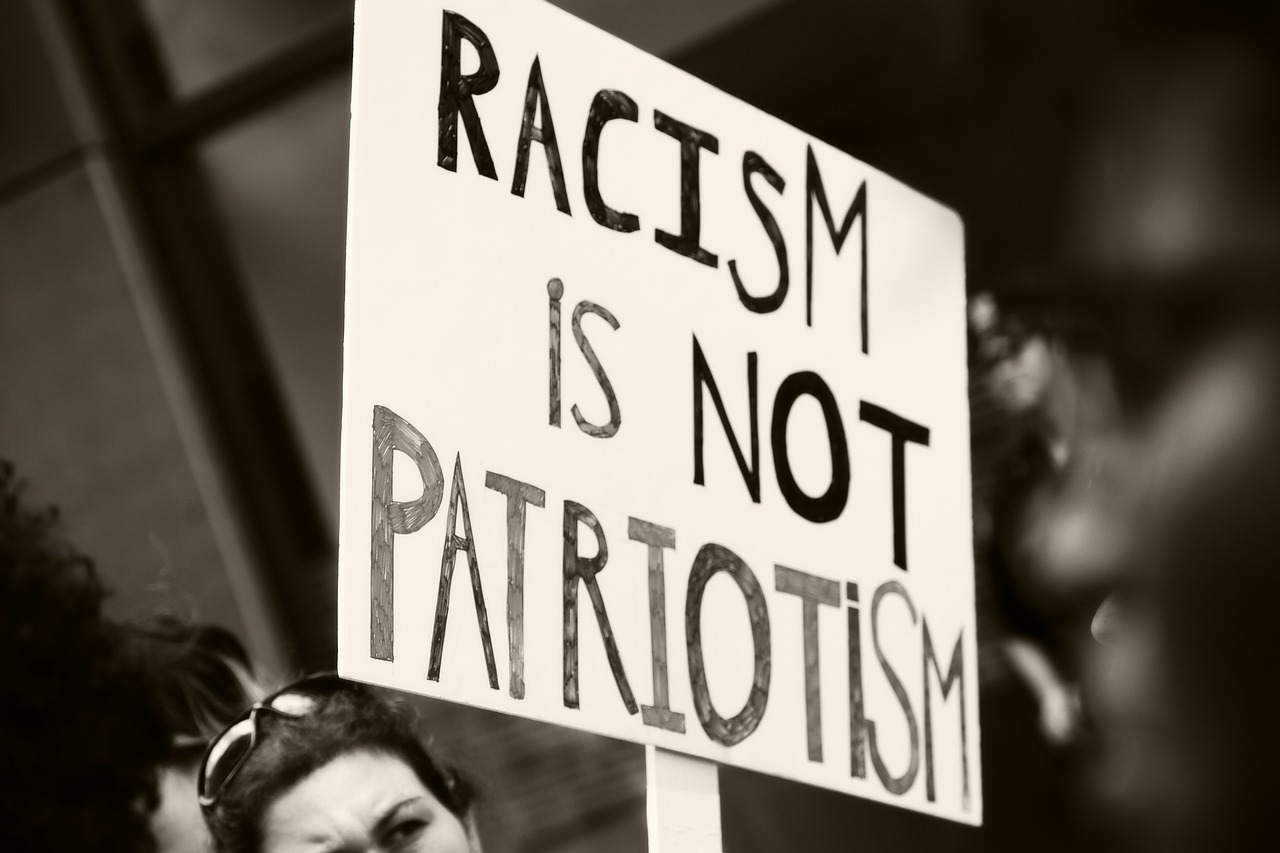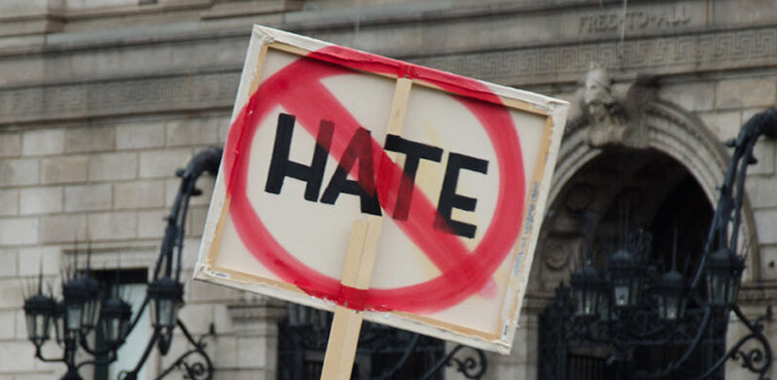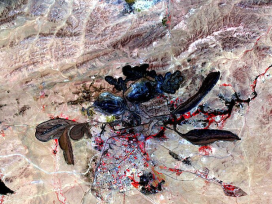Over the past decade, a number of murderous far-right terror attacks worldwide have been motivated by overt anxiety about living in the end times of white dominance. This fear is not only articulated and acted on by terrorists from the extreme right, but has also been voiced by thinkers and politicians closer to the centre of the right-wing spectrum.
Despite obvious and important differences, extremists and the broader right seem to share a sense of accelerating demographic decline, a terror of being ethnically outnumbered and dread of losing their racial birthright. Fears of this kind are very contemporary and have been expressed politically as well as through sickening acts of violence, but they also form part of a long historical narrative.
Demographic anxiety is an old phenomenon. Principally, it is a fear of the ‘wrong’ kind of people multiplying and becoming the new majority, while the ‘right’ kind of people lose out and end up as a minority, or else disappear altogether.
Modern history has frequently recorded apprehensions about demographic surges in neighbouring countries, when the country perceived as one’s own appears to be in decline. The anxiety is generally that, if the mismatch continues, if there are ever more of ‘them’ and fewer of ‘us’, it will only be matter of time before invasion and subjugation follow. In the early 20th century, a form of medical demographic anxiety endorsed a focus on the effects of physical and mental ‘degeneracy’. This led to eugenics and sterilization programmes in a range of countries, including the US and Nazi Germany. Later, a more benign version of demographic unease was linked to ideas about economic growth and theories (from mercantilism to modern growth theory) which argue that population makes a crucial input to economic development. Yet another narrative, informed by blatant class prejudice, has also featured prominently in the history of anti-democratic thinking. It holds that lower classes, the uneducated and unwashed masses, proliferate to excess, while those who are highborn, prosperous and educated do not reproduce in sufficient numbers.
Nationalist, medical, economic and class forms of demographic thinking have made significant contributions to modern politics but, since the 1970s, the concerns they nurture have been further enhanced by a neo-Malthusian, ecological worry. This emphasizes that global demographic growth and, more specifically, population development in developing countries are putting unsustainable pressure on the world’s resources, the environment and the climate.
Racism and Demography
These five forms of demographic anxiety (nationalist, medical, economic, class and ecological) need not necessarily have a race component, although they often do. Biological racism and colonialism, however, represent considerably more malignant versions of the same syndrome. Stories about races doomed to extinction; biological and religious theories of race hierarchies; notions that conquest is a sign of superior entitlement; beliefs that some races are stuck in prehistory while others symbolize modernity; the rehashing of traditional tales about young, expanding nations versus old and decaying ones into narratives about race; social-Darwinist theories of history as an eternal struggle between races for domination – all these ideas, and others, put demography front and centre of the political stage.
Alongside theories of racial superiority or inferiority, there emerge intense fears about race-mixing, bans on intermarriage, the disciplining of soldiers and administrators in the colonies, and later – with the rise of representative democracy and anti-colonialism – panic about ‘dark majorities’ at home or globally.
Demographic anxiety finds its most murderous expression in the mass exterminations perpetrated by Nazi-Germany: the killing of undesirables; those viewed as ‘unworthy of life’ because of their mental health or heredity; homosexuals; people of Roma ethnicity; and, most systematically, people of Jewish origin. It was intended that entire national populations from Eastern Europe and Russia should be replaced or subjugated by ethnic Germans. Subsequently, following World War II, hard forms of demographic anxiety went underground, although coded versions of the same sensibilities continued to be articulated in concerns raised internationally about a new global order with a white minority, through empire-nostalgia, or isolated references to immigration as ‘poison in a clean glass of water’. In some quarters, migrant groups were accused of reproducing to excess and the immigrant woman’s womb was pronounced to be an invasion force. Fears such as this were articulated, most infamously perhaps, in British politician Enoch Powell’s 1968 ‘Rivers of blood’ speech.
Concern about over-population, which has intensified in recent decades, almost invariably locates the problem in poor countries. This is despite the fact that resource consumption is disproportionately located in the rich countries. One figure responsible for putting overpopulation on the agenda, and merging it with racialized demographic anxiety, is the American ecologist Garret Hardin. In a controversial 1974 essay entitled ‘Lifeboat Ethics’, Hardin argued forcefully against aid for impoverished countries. Later, in 1997, he wrote that he was ‘daily confronted with hordes of highly pregnant Mexicans coming across the border at the last minute and having their babies in American hospitals – at American expense’. The use of the word ‘hordes’ clearly suggested the arrival, in large numbers, of groups that were both foreign and invasive.
The form of demographic anxiety that links racist and ecological concerns has produced new ideas (and reintroduced old ones) relating to sterilization, reproductive control, and parallels between the poor and the ‘unwashed’. It has also brought back the notion of alien ‘dark masses’ that bring disease (consider the term ‘Chinese virus’), as well as polluting and soiling ‘our’ countries. The last of these was espoused by Fox News talk show host, Tucker Carlson: ‘I actually hate litter,’ he said, ‘which is one of the reasons I’m so against illegal immigration’.
Demographic panic has also introduced the idea that climate change (often denied as a manmade reality) is the result of the presence of too many ‘wrong’ people – the supposed solution being that there should be fewer of them. In a 2017 blogpost on an alt-right website, an anonymous writer going by the name Evolalinkola (which merges the name of the Italian fascist, Julius Evola, with the Finnish ecofascist, Pentii Linkola) wrote: ‘Removing Western aid from the third world and other developing countries would decrease their population number which in effect lowers the pollution of the world; fewer people equals less pollution’. Population and climate anxieties are ripe for right-extremist exploitation. We might be wise to brace ourselves for the appearance of more eco-fascist ‘demographic solutions’ purporting to combat environmental and climate issues in future.
The Great Replacement
Demographic anxiety has also exploded onto the public arena with a white nationalist conspiracy theory dubbed the ‘great replacement’. This promotes the idea that whites are being deliberately pushed out of majority status by other racial groups, intent on taking over their territories. The theory was mentioned by all three right-wing candidates in the April 2022 French presidential election, although only Éric Zemmour made it a pillar of his campaign. It is a theory currently enjoying plenty of airtime in right-wing media, parties and organizations.
In May this year, the Associated Press released a poll showing that 32% of adults ‘agree that a group of people is trying to replace native-born Americans with immigrants for electoral gains. A similar share (29%) also express concern that an increase in immigration is leading to native-born Americans losing economic, political, and cultural influence’. That same month, the New York Times published a piece by Nicholas Confessore documenting the repeated use of replacement theory by prominent Republicans (including Tucker Carlson) and portraying it as a truth underlying contemporary American politics.
The notion of a ‘great replacement’ has been both mainstreamed and radicalized. The fear of being superseded, of losing status and power globally, of experiencing a loss of coherence and recognizability in one’s community, and of feeling on the brink of extinction, significantly motivates contemporary nationalist-populist mobilization and represents a key force behind a wave of far-right terror attacks in recent years.
As Erica Chenoweth and Zoe Marks documented in Foreign Affairs (March/April 2022) we are currently witnessing a ‘revenge of the patriarchs’ – a global backlash against women’s rights, most recently evidenced in the US Supreme Court decision on abortion rights. Part of this backlash is clearly motivated by demographic panic. It is reflected in calls by Hungary’s strongman Viktor Orban for more Hungarian women to give birth to more ethnic Hungarians, and in the way autocrats continue to curtail women’s rights and cut back on reproductive freedoms. Autocracy and patriarchy lead co-dependent lives.
Demographic anxiety and terror
All these ideas have played out, in even more outrageous and reprehensible forms, in a number of contemporary ‘manifestos’ circulated by terrorists from the extreme right. Demographic anxiety kills. On 22 July 2011, Anders Behring Breivik shot dead 69 people at a left-wing summer youth camp in Norway ; on 15 March 2019, Brenton Tarrant murdered 51 and wounded 40, mostly Muslims, in an attack in Christchurch, New Zealand; on 3 August 2019 in Al Paso, Texas, Patrick Crusius killed 23 and wounded another 23 in a shooting directed at the city’s Hispanic-American population; on 14 May 2022, Payton Gendron gunned down 13 people in Buffalo, killing 10, in an attack aimed mostly at Afro-Americans. The manifestos linked to all four terror attacks made it clear that, in every case, the targets were intended.
Breivik’s manifesto was largely copy-pasted from various far-right writers, while Gendron had copied significant passages from Tarrant. The evidence suggests a common frame of mind, a circulation of ideas, themes and references, which, I would argue, centres around demographic panic, the fear of becoming a minority, of losing one’s racial birthright, and the view that social, political and racial degeneration is now so deep-seated that only extreme, violent acts can undo the process of racial decline.
Tarrant’s manifesto begins with the words: ‘It’s the birthrates. It’s the birthrates. It’s the birthrates’. As in the other three manifestos, the population issue is depicted in existentialist terms. Breivik declares that ‘Europe is under siege. It is under demographic siege’. Tarrant writes: ‘Every day we become fewer in number, we grow older, we grow weaker’. Crusius warns of ‘cultural and ethnic replacement brought on by an invasion’. And according to the opening sentences of Gendron’s manifesto, the most important message, is that ‘White birthrates must change. Every day the White population becomes fewer in number’. A coupling of race and catastrophe lies at the core of the thinking of all four terrorists and their deadly actions.
Replacement-thinking only makes sense within a racist worldview, where distinct races are viewed as ethnically and culturally separate, and never to be mixed. Both Tarrant and Gendron refer to ‘a white genocide’. In all four manifestos, immigration is repeatedly described as an ‘invasion’, with reference to ‘occupying forces’ and ‘replacers’. Migrants are hostile, foreign, and existentially threatening. They represent a force that may be civilian in name and appearance but which is, in effect, military. This is what makes the rhetoric of ‘invasion’ so worrisome. It presupposes that immigrants have a plan of malicious intent and redescribes them as de facto soldiers in combat. By implication, they are to be treated as such.
Another paramount issue in the manifestos is time, which is said to be running out for the white race. ‘We have only a few decades to consolidate a sufficient level of resistance before our major cities are completely demographically overwhelmed by Muslims,’ Breivik insists. Demography, he says, ‘is king’. It reflects the natural laws that constitute society, the biologization of politics, and gives moral justification to the implementation of ‘ultimate measures’ to control fertility rates.
Demographic panic is always accompanied by a heightened sense of end times and an acute feeling of running out of options. Act now, or be forever subjugated. Crusius terms his attack an ‘act of preservation’ after a life spent ‘preparing for a future that currently doesn’t exist’. The temporal disconnect between a sense of entitlement linked to ‘birthright’ or perceived ethnic ‘superiority’, and the expectation of imminent loss and inferiority, fuels the rage behind the manifestos at a level that is personal as well as political.
The causes of the supposed loss of a future and of ‘white genocide’ are identified at two levels, each with its own moral landscape. One level is internal and includes elite ideas about betrayal, the feminization of society and the emasculation of the white man. The other level is external: an alleged ‘invasion’ by aliens with a higher fertility rate.
The fundamental reason is identified as betrayal. The demographic shift is not coincidental; immigration and race-mixing are to blame. According to Breivik: ‘The sum of these deliberate genocidal practices when mixed with Marxist procreation policies (feminism) is equal to the demographical annihilation of European ethnic groups if they are allowed to continue’.
The manifestos of Breivik, Tarrant and, most prominently, Gendron contain blatantly anti-Semitic elements which suggest that a hidden Jewish power grab perpetrated by a global elite is looking to weaken the white male and destroy the white family, in order to take control over a pliant and subdued population. When Tobias Rathjen – another far-right terrorist – attacked Germans of Turkish descent in the German town of Hanau in February 2020, he posted: ‘Feminism is the cause of falling birth rates in the West, which is the cause of mass immigration. And the root of the problem is the Jew’.
On the anti-immigrant right, groups ranging from parliamentarian national-populists to far-right terrorists share a conviction that an alliance exists between a traitorous white domestic elite – to which many add feminism and ‘cultural Marxism’ – and immigrants, people of colour, ‘hordes’ moving up from the South. ‘Pro-corporation = pro-immigration’, Crusius declares. He suggests that the elite is responsible for the great replacement, and that immigration is the means by which the policy is being implemented. What’s more, Crusius writes, a nation ‘can only be destroyed from the inside-out. If our country falls, it will be the fault of traitors’. The other manifestos echo this belief.
Treason is a constant theme: the internal enemy is opening the doors to the external enemy. The terrorists’ position justifies violence and mass murder but also helps explain something otherwise inexplicable: how is it that a master race seems to be facing a future of defeat and subjugation? How can whites, apparently destined for supremacy, be losing demographic ground? It can only be the result of betrayal. The inner enemy has opened the door to the external enemy, and together they have weakened the white race – the white male in particular.
Breivik and Tarrant are adamant that ‘strong men do not get ethnically replaced’. If nature were to take its course, if it were not manipulated by evil forces, the white man would prevail. ‘Weak men have created this situation and strong men are needed to fix it.’ So, Tarrant. Meanwhile, Breivik focuses his attack on feminism, which – he argues – has softened the white man and provided an open invitation to the black conqueror. His manifesto brims with misogyny and the urge to subjugate women in order, as he explicitly says, to return to the family patterns of the 1950s.
Birth rates are dropping because the white woman has sought liberation and equality with men. She has been seduced by feminism to abandon her true, biologically determined calling. Birth rates have plummeted because the nuclear family has been destroyed by ‘the disaster of hedonistic, nihilistic individualism’. Reproductive obligation has given way to shameless egotism and women, in particular, are to blame. The white man has gone soft. ‘Men of the West must be men once more’, Tarrant says and his manifesto concludes with a series of images depicting hunter-warrior men and maternal mothers. The manifestos give women three identifiable roles: mothers, race-traitorous sluts and the rape victims of black men. All three reflect a perception of women in purely reproductive terms, with the white man seen as a ‘natural’ protector and procreator.
The problem, then, is not just immigration. It is not only about who is crossing the border or in what numbers. Demographic anxiety runs deeper. The failure of whites to reproduce; their alleged inability to create strong, sustainable families and communities capable of defending themselves; the self-destructiveness of the West; its physical and moral impotence… all these are challenged by a vision of black/brown virility and the presence of an increasingly dominant and powerful coloured life force. The position of the white race has been usurped by the birth rate of non-whites: the time-honoured racist trope of the unbounded licentiousness of darker skinned races prevails. Perceived black virility challenges white supremacy at an individual level (through stories of rape) and socially (through narratives about demographic shifts).
Crusius complains that immigrant groups have the highest rates of reproduction. Breivik has a similar obsession, while Tarrant tells us that those he attacked were ‘an obvious, visible and large group of invaders, from a culture with higher fertility rates, higher social trust and strong, robust traditions’. They have, he says with barely disguised envy, a ‘will to conquer’ and their ‘own strong, dominant and rising culture’. The West, on the other hand is an ‘elderly, decaying, degenerate culture’. Gendron echoes this position. Stereotypes associated with ideas about young and old nations, about expansionism as a sign of the will to life, and about doomed races have returned to stalk the pages of far-right manifestos.
The eternal return of a nefarious vision
The manifestos represent a rehash of an old idea about ‘excess’ reproduction among the ‘wrong’ people, merged with racism’s exoticized, sexualized image of the virile black male. This combination creates an acute sense of existential threat and pronounced inferiority. The manifestos clearly subscribe to ideas of racial hierarchies locked in a struggle of will to conquer and multiply. It is a drive, a will to life, they consider to be missing in white societies but prevalent in other groups.
Hence, peoples once identified as inferior and subjugated now look to a future promising them supremacy and power. The world has been turned upside down. The south is coming out on top, the white master race is dying out, and the people it once controlled have become bearers of the future.
Consequently, the reprehensible argument concludes, only violence can rectify this ‘unnatural’ trajectory. Only a willingness to kill not just men, but women and children (those ‘unarmed invaders’ supposedly leading a ‘conquest by womb’), can stop the demographic trend from establishing itself as destiny. A willingness to condone brutality and terror seems to convince these murderers of the far-right that a white life force still exists. The will to life is demonstrated by a willingness to conquer and kill. It is a trope as recognizable in right-wing extremism as it is in radical Islamism.
Underpinned by outspoken allegations of internal betrayal, the line of thought stirred by demographic panic is deeply troubling. It has been nurtured by mainstream debate, transformed into antiegalitarian policy, radicalized and expressed in terrorist attacks. We must expect more violence from it in the future. This calls for a fuller understanding of the historical variants of demographic thinking and the forms in which they are playing out today – as metaphor, analysis, strategy and action plans.








